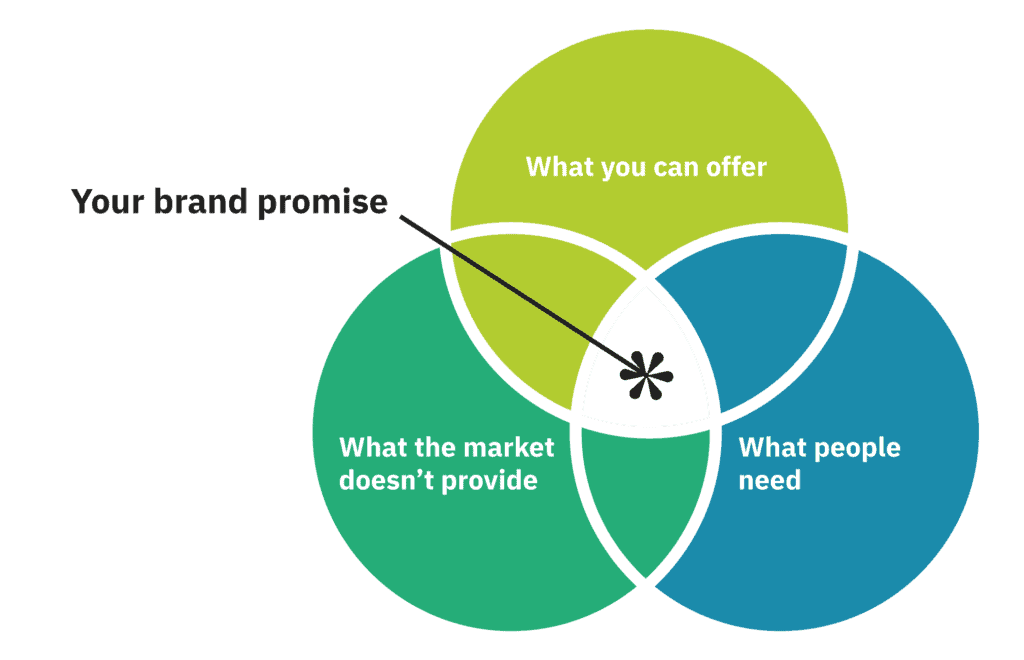How to Build Consumer Trust Through Brand Identity
Establishing a trusted brand identity has become more crucial in an age of misinformation and mistrust. Consumer trust is the foundation on which great brands are built, fostering loyal customers who feel connected to the company on a deeper level. But trust isn't automatically given – it must be earned through intentional branding strategies that convey transparency, integrity, and purpose.
In this blog post, we'll explore proven methods for developing an authentic brand identity that resonates with your target audience and generates trust. You'll learn creative ways to communicate your brand's vision, values, and commitment to quality. We'll also discuss impactful storytelling techniques that engage customers in your brand's origin story and unique personality.
With distrust and scepticism on the rise, the role of brand identity has become one of the most critical consumer touchpoints. It attracts customers and sustains lasting relationships through shared beliefs when done right. Implement these trust-building branding tips, and you'll be well on your way to becoming an admired industry leader known for integrity in the eyes of consumers. The ultimate reward will be brand advocates who proudly stand behind your company for years.
Table of Contents
Importance of Brand Identity in Building Consumer Trust

When you think about it, a brand is much like a person. It has its unique personality, values, and story to tell. Like how you get to know and trust an individual, consumers want to know the real story behind a brand before giving their trust.
That's why having a well-defined brand identity is so important. It gives the brand a face and voice that consumers can connect with. When a brand stays true to who it is through its messaging and actions, it builds credibility like a good friend who never lets you down.
Take a clothing company that makes environmentally friendly clothing, for example. If sustainability is woven into their brand story's fabric (pun intended) and consistently delivers eco-friendly products. Customers who care about that feel good buying from them. They know what to expect.
Consistent identity across all touchpoints is critical in a sea of brands. You want your essence and values to shine from your logo to your social media. This helps consumers recognise your brand anywhere and builds trust through familiarity.
So be the authentic friend, not the flaky acquaintance. Let your brand's personality and passion come through. By standing for something and keeping your promises, you go from just another company to a brand consumers know and trust.
Strategies to Build Consumer Trust Through Brand Identity

Building trust with customers is crucial for any brand's success. Brands can earn trust in several ways. Being consistent with messaging and visuals across channels helps. When a brand looks, sounds and feels familiar, it feels reliable. Customers come to expect a particular experience.
Transparency is also crucial. Brands that openly share details about how they work gain credibility. Customers feel the brand has nothing to hide. Authentic communication also matters. When brands speak genuinely, customers relate. It feels like a relationship rather than a sales pitch.
Delivering on promises goes a long way, too. If a brand says its products are high-quality and its service is excellent, it must meet those standards. Customers will notice if promises don't align with reality. Building a reputation for keeping commitments establishes trust.
Positive customer experiences build trust—responsive service, personalised interactions and going the extra mile matter. Customers who feel valued will likely trust the brand and buy again. Social proof, like reviews and testimonials, also provides credibility.
Engaging regularly on social media and other channels nurtures loyalty. It shows customers that the brand cares about them. Providing valuable content and prompt responses to concerns demonstrates good intentions.
In the end, consistently delivering quality and value cements trust. Customers who get what they paid for come back for more. Those who feel they received an excellent product or service are loyal brand advocates. They'll trust that brand to meet their needs next time, too.
- Hardcover Book
- Airey, David (Author)
- English (Publication Language)
- 288 Pages – 01/22/2019 (Publication Date) – Rockport Publishers (Publisher)
Consistency in Brand Messaging and Visual Identity
Building customer trust is essential for brands, and consistency is critical. When a company uses the same logos, colours, taglines, and messaging across their ads, website, stores – everything – it helps people recognise them and know what to expect.
Take a fast food chain, for example. When you see those familiar golden arches or their “I'm lovin' it” slogan, you immediately know it's McDonald's. You trust them to deliver the same type of food, service, and experience no matter which location you go to. Brands build recognition and trust through that consistency.
It's more than visual consistency that matters, in any case. Having reliable, steady messaging about values, mission, and products is just as important. When a brand stays on track with what it stands for and what it offers, it's easier for customers to understand and believe in them. If their messaging is all over the place, it's confusing and makes people unsure if they can trust the brand.
So, keeping branding, logos, taglines and core messages consistent for companies aiming to connect with consumers is crucial. It helps forge trust and recognition one interaction at a time. Of course, they still need quality products and services, too! However, consistent branding and messaging lay the foundation for strong customer relationships.
Transparency and Authenticity in Brand Communication

Trust is the foundation of any successful brand-consumer relationship. Without trust, brands struggle to attract and retain loyal customers in an increasingly competitive and sceptical marketplace. Two keys to building trust through brand communication are transparency and authenticity.
Transparency means openly sharing vital information about products, business practices, values, etc. For example, an eco-friendly clothing company could provide details on its supply chain, manufacturing partners, and materials sourcing. This shows consumers the brand's commitment to sustainability. In contrast, a lack of transparency can cast doubt and mislead customers. Complete transparency demonstrates accountability and helps conscientious consumers make informed choices.
Authenticity involves communicating in a genuine way that resonates with target audiences. Instead of creating a false persona, brands should share their true story. For instance, an organic food brand could discuss its founder's passion for healthy eating after a personal health crisis. This narrative creates a human connection. Or a small business could share the obstacles it faced in its early days, drawing in supporters who want to cheer on the underdog. Authenticity establishes credibility and forges emotional bonds between brands and consumers.
Additionally, brands can showcase transparency and authenticity through initiatives like factory tours, behind-the-scenes videos, and introductions to team members. The more a brand reveals its real personality, motivations and practices, the more consumers will trust it. In an era of social media and reviews, deception is rapidly exposed. A commitment to truthful, transparent communication and staying real is the best way for brands to build lasting consumer loyalty and advocacy.
Building a Strong Brand Reputation
Building a solid brand reputation is vital for any company that wants to establish trust and loyalty among consumers in the long run. Many factors influence a brand's reputation, but a few key elements tend to shape how consumers perceive a brand:
- Product/service quality
- Customer satisfaction
- Responsiveness to problems
- Consistency in delivering upon brand promises
By focusing on these core areas and making them pillars of their brand identity, companies can gradually build a powerful reputation that leads to higher consumer trust.
For example, take a technology company with a reputation for quality and reliability in its manufactured laptops. This company consistently receives high reviews and ratings for its laptops':
- Durability
- Performance
- Design
Furthermore, this company is known for its exceptional customer service and swift responsiveness whenever there are technical issues or problems with its products.
These product quality and customer satisfaction strengths have built tremendous trust among consumers, who now view this brand as a trusted household name for laptops. The company's stellar reputation becomes a critical competitive advantage, as consumers choose its products over lesser-known brands due to their higher trust.
Ultimately, brands that achieve this level of trust and loyalty do so by always making customer satisfaction a central focus. They constantly research customer preferences, complaints, and needs to refine and improve products and services. They invest heavily in:
- Customer support
- Training staff to provide friendly, quick resolution of any issues
By proving repeatedly that customer satisfaction is a top priority in everything they do, trusted brands convince customers they are reliable partners for the long haul. This consistent commitment to exceeding customer expectations builds a reputation of excellence that becomes a significant asset for any brand.
- Slade-Brooking, Catharine (Author)
- English (Publication Language)
- 160 Pages – 01/26/2016 (Publication Date) – Laurence King Publishing (Publisher)
Providing Excellent Customer Service
Trust is the bedrock of any strong relationship, especially regarding the relationship between customers and brands. In today's highly competitive marketplace, excellent customer service is the key to building consumer trust and loyalty. Brands that prioritise customer satisfaction through personalised, responsive interactions can cultivate meaningful connections with consumers.
Customers' positive experiences with a brand's customer service shape their perception of that brand. Prompt issue resolution, clear communication, and representatives who go above and beyond to help create the kind of memorable interactions that make customers feel valued. These exceptional service experiences build goodwill and emotional bonds between customers and brands.
Conversely, poor or impersonal customer service damages trust. Customers who feel ignored or dismissed are unlikely to view that brand as reliable or dependable. For this reason, brands should invest heavily in customer service training for representatives. Knowledgeable, empathetic service agents empowered to resolve issues can turn frustrations into delights.
Brands serious about customer service should also provide multiple channels of communication – phone, email, chat, social media – and staff these channels adequately to minimise wait times. When appropriate, proactive outreach and status updates also enhance the customer experience. The goal should be fluid, personalised conversations that resolve and feel effortless from the customer's perspective.
Excellent customer service transforms one-time shoppers into lifetime brand loyalists when done right. It signals to customers that the brand respects them and values their business. This fosters the consumer trust that is the bedrock of any thriving company. By dedicating themselves fully to customer satisfaction, brands can build reputations for reliable partners devoted to their customers' success and happiness.
Utilising Social Proof and Testimonials

In today's digital world, consumers are savvier than ever before. With endless product options and brands vying for their attention, people increasingly look to validation from others before making purchase decisions. This makes social proof critical in building consumer trust and driving conversion.
Social proof refers to the psychological influence we feel from others' experiences and opinions. Also known as informational social influence, it stems from the human tendency to look to others for cues on acting, especially when facing uncertainty. We instinctively assume that if many think something is good or valuable, it likely is.
Testimonials are a prime example of social proof in action. By spotlighting enthusiastic reviews from satisfied customers, brands can nurture a sense of community and validation around their products. Vivid, specific testimonials that tell a compelling story are most persuasive. For example, an outdoor retailer could quote a customer saying, “Thanks to your top-rated hiking boots, I was able to complete my first 10-mile trek up Mount Elbert without any blisters or soreness!” This creates a relatable scenario that potential customers can envision themselves in.
Beyond testimonials, tactics like showing average customer ratings, displaying trust seals, and noting how many people have purchased a product leverage the principle of social proof. For instance, a software company stating, “Join the over 10 million users who rely on our tools daily,” implies their solution is widely used and validated.
To maximise social proof's impact, ensure proof points are current, relevant to your target audience, and easy to find across touchpoints. Refresh testimonials quarterly and monitor their influence on metrics like conversion rates over time. With authentic, strategic use of social proof, brands can shape perceptions, inspire confidence, and ultimately drive sales.
- Hardcover Book
- Wheeler, Alina (Author)
- English (Publication Language)
- 324 Pages – 10/24/2017 (Publication Date) – John Wiley & Sons Inc (Publisher)
Engaging with Customers through Social Media and Other Channels
Connecting with customers through social media and other channels is critical to establishing trust. When brands actively participate in conversations, respond promptly, and share helpful information, it creates a sense of relationship and dependability. Engaging with customers allows brands to address concerns, provide support, and build rapport.
For example, a clothing company that interacts with customers on social media by replying to comments, answering questions, and giving behind-the-scenes looks fosters loyalty and goodwill. This engagement forms a community and strengthens the brand's and its customers' bond.
Brands need a comprehensive strategy to engage with customers on social media and beyond successfully. This includes regularly posting engaging content, responding to comments and messages, and keeping track of brand mentions and discussions. Engaging with customers helps brands earn trust, loyalty, and even advocacy.
In addition to social media, brands should explore other avenues for connecting with customers, like email newsletters, live chat support, and community forums. By providing multiple ways for customers to interact with the brand, brands can accommodate different preferences and make sure customers feel heard and supported.
Delivering on Brand Promises

Trust is the bedrock of any successful brand-customer relationship. When customers trust a brand, they feel secure purchasing its products and services and investing in their loyalty. That's why it's so crucial for brands to deliver on their promises consistently. Broken vows erode trust faster than just about anything else.
Let's consider a fictitious example. Imagine a new airline called Zoom Air launches with the promise of affordability, punctuality, and top-notch customer service. Eager travellers book flights, enticed by low fares and Zoom's pledge to get them to their destination on time with a smile.
But in the first few months, Zoom Air's operations were plagued with problems. Flights are frequently delayed due to mechanical issues. Baggage is lost or delayed. And customers find Zoom's call centre unhelpful or unable to solve their problems. These broken promises generate negative buzz on social media travel review sites, and customer trust and loyalty plummets.
To deliver on its brand promise, Zoom Air needs to align all parts of its organisation to provide the experience it promoted to customers. That means securing reliable planes that can depart and arrive on schedule. Training call centre staff to be knowledgeable, patient and empowered to resolve customer issues. And having robust baggage tracking and delivery processes.
By coordinating across departments to uphold its affordability, timeliness and service pledge, Zoom Air can start rebuilding trust and credibility. Satisfied fliers will spread positive reviews, reinforcing Zoom's brand promise instead of undermining it. Delivering consistent, seamless experiences demonstrates a brand's commitment to its customers.
The stakes are high because disappointed consumers today have many options to switch services. A brand that repeatedly disappoints risks permanent reputation damage and customer attrition. The path to profitability is keeping customers happy by living up to the expectations created by marketing promises. Brands earn trust – and loyalty – by aligning their entire organisation to reliably deliver on what they've promised.
Conclusion
In today's crowded marketplace, establishing customer trust is more important than ever. A robust and consistent brand identity is critical to fostering that trust over time. By clearly defining your brand purpose, personality, and values from the start and ensuring they are reflected across every touchpoint and interaction, you lay the foundation for an authentic relationship between your business and its customers.
This requires an ongoing commitment to aligning your brand identity with business practices and culture. Trust is hard-won but easily lost, so be vigilant about living up to your brand's promises. Meet customers where they are, understand their changing needs, and evolve your brand identity accordingly while retaining its essence. The brands that succeed are those that build an empathetic connection with consumers.
You can develop genuine trust that inspires enduring customer loyalty with intentional, human-centred brand building. In a time of rapid change, this provides the stability both businesses and consumers crave. The brands consumers trust today are those that understand their needs and reflect their values. Build your brand identity with heart, and your customers will thank you.
Last update on 2024-05-04 / Affiliate links / Images from Amazon Product Advertising API



